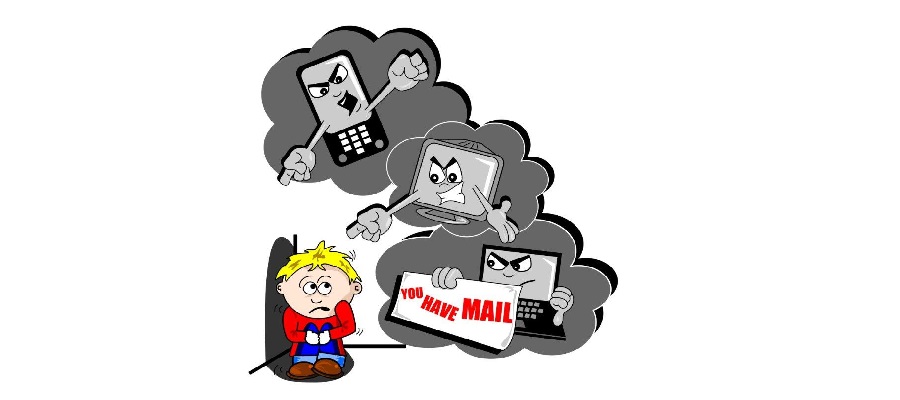Before the Internet, the only good thing about school bullies was that you only had to see them at school. These days, things are more complicated. Bullies attack kids physically and verbally not only face-to-face at school, but also through text messages, emails, phone calls, or via networking sites like Facebook or Youtube.
Bullies aren‘t just in the sandbox or the school cafeteria1 anymore. They are in our phones, computers, and they can follow us everywhere. They are called cyberbullies. A cyberbully uses technology to harass2, threaten, embarrass, or target3 a person. This includes rude text messages, IMs, emails, and posting hurtful pictures or videos on the web. These aren‘t one-time insults or bad jokes. A cyberbully uses technology to constantly tease their victim4. Overwhelmed with intimidation5 and feeling like they can‘t get away from their tormentors6, many teenagers can‘t handle it.
Here are some statistics that show how serious the bully problem is in American schools:
• Three out of four students report being bullied at least once in their life.
• 69% of students believe schools respond poorly to reports of bullying.
• Each month over 250,000 students report being physically attacked.
• Each day 160,000 kids miss school for fear of being bullied.
• 42% of kids have been bullied online.
• 21% of kids have received mean7 or threatening emails or other messages online.
• When a child or teen is being bullied, adults intervene8 4% of the time, peers intervene 11% of the time, and 85% of the time no one steps in to help.
Even though these statistics come from the United States, countries all over Europe have issues with teen bullies. The U.K. leads Europe with the most reported cases of physical and verbal harassment related to bullying.
Do you think your school has problems with bullies?
Do these statistics seem too high or too low for your country?
Anti-bullying Policies and Laws
As the number of students that are bullied each year rises, high schools in Canada and the U.K. are adopting “anti-bullying policies.” Forty-two of the 50 states in the U.S. have anti-bullying laws.
• Teachers must attend trainings and seminars about bullying behavior to help them recognize victims in their classroom and school.
• Bully prevention programs must be incorporated into the school curriculum. These programs usually have character, honesty, and compassion lessons to help students learn these core values.
• Even though cyberbullies often continue to bully students off campus and outside of school hours, schools are required to discipline students for harassment through electronic gadgets9 off campus as well as any behavior that might happen on campus.
• Teachers must report every episode of bullying to the school principal. The principal is required to investigate10 each allegation11 seriously and take disciplinary action against the off enders.
• Disciplinary action against bullies could be any of the following: receive a fine12, suspension13 from school, expulsion14 from school, not being allowed to participate in sports or extracurricular activities and prosecution in court15 for harassment and civil rights violations.
• Whenever a bullying situation arises, both the parents of the victim and the bully will be contacted to create an “antibully” plan for the individuals involved.
• Teachers and principals who ignore and do not report bullies can befi ned and prosecuted by the law.
What can you do?
1. You‘ve just read what laws and policies demand from schools in order to stop bullies. What should teens do to fix this problem?
2. Create your own policy for teens to wipe out16 bullies in your school.
3. Read the requirements that antibullying laws place on schools.
4. Do you think these would work in your school?
5. Explain which ones would be effective and which would be unnecessary.
By Lindsey Halas
Vocabulary: 1jedáleň – jídelna; 2trápiť, trýzniť – trápit, trýznit; 3byť terčom posmechu – být terčem posměchu; 4obeť – oběť; 5byť zaplavený zastrašovaním – být zaplaven zastrašováním; 6trýzniteľ – trýznitel; 7hanebný, podlý; 8zakročiť, intervenovať – zakročit, intervenovat; 9prístroj, aparátik – přístroj, aparátek; 10vyšetrovať – vyšetřovat; 11/æligeišn/ obvinenie – obvinění; 12pokuta; 13dočasné vylúčenie – dočasné vyloučení; 14vylúčenie – vyloučení; 15súdne stíhanie – soudní stíhání; 16úplne zničiť, vyhubiť – úplně zničit, vyhubit

